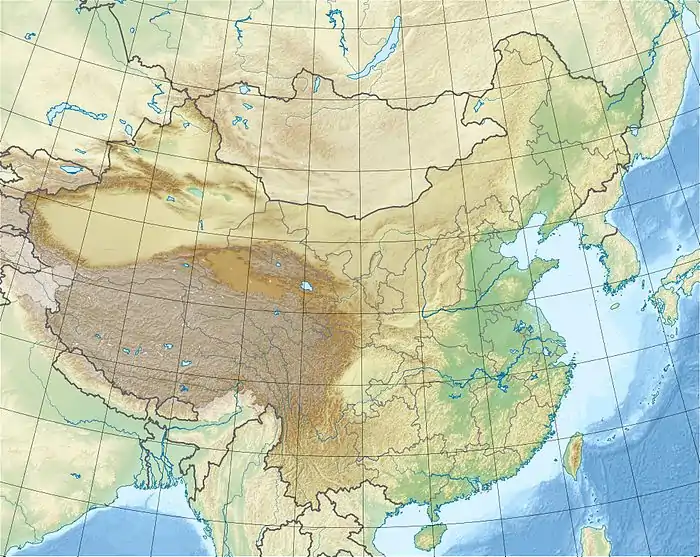Great Tancheng earthquake
The Great Tancheng earthquake (Chinese: 郯城 地震; pinyin: Tánchéng dìzhèn), also known as the Shandong earthquake was a major seismic event that occurred during the Qing Dynasty somewhere in Shandong Province on July 25 of the year 1668. The earthquake had an estimated magnitude of Mw 8.5, making it the largest historical earthquake in Eastern China, and likely one of the largest in the world. The earthquake had cataclysmic implications to the region, shaking intensity was estimated to reach XII (Extreme) on the Mercalli intensity scale, the most destructive shaking an earthquake could achieve.[1] An estimated 43,000 lives were lost in the earthquake, and its effects were widely felt. The epicenter may have been located between Juxian and Tancheng County, northeast of the prefecture-level city of Linyi in southern Shandong.
 | |
 | |
| Local date | July 25, 1668 |
|---|---|
| Magnitude | 8.5 Mw |
| Epicenter | 35.3°N 118.6°E |
| Areas affected | Qing dynasty (present day China) |
| Max. intensity | XII (Extreme) |
| Tsunami | Yes |
| Aftershocks | Lasted for six years |
| Casualties | 42,578 dead |
Geological setting
The earthquake of 1668 occurred along the Yishu Fault, which is part of the massive Tanlu Fault Zone which formed in the Mesozoic. This fault has a silp rate of less than 1 mm/yr.[2] The Yishu Fault is runs for 360 km. During the earthquake, the Yishu Fault produced a surface rupture for a length of 160 km with an average offset of 9 meters. Research found that the slip sense of the fault was mainly dextral strike-slip with a small thrust component.[3] A hypocenter depth of between 22 and 28 km has been suggested.
The same fault may have also produced a magnitude 7.5 earthquake in Haicheng, 700 km north of this event.[4]
Impact
The powerful earthquake was felt in 379 counties, 29 of which had catastrophic damage.[4]
In Ju County, many structures were totally destroyed. No building was left standing in the area with a diameter of more than 50 km. Wells erupted fountains of water and the ground ripped open, gushing out sand and water. The same was seen in Tancheng County where water shot through the air up to 10 meters high. Fissures were said to be so deep that the bottom of them could not be seen. The earthquake completely obliterated every single home, temple, battlement and storehouse.[1]
At Linyi, no house was left untouched, black water was said to emerge from fissures.[1]
References
- "CHINA: SHANDONG PROVINCE". NGDC. Retrieved 9 Dec 2020.
- Mian, Stein, Liu, Seth (2016). "Mid-continental earthquakes: Spatiotemporal occurrences, causes, and hazards" (PDF). Earth-Science Reviews. 162: 364–386 – via Elsevier Science Direct.
- Zhou, Cuiying; Diao, Guiling; Geng, Jie; Li, Yonghong; Xu, Ping; Xu, Xinliang; Feng, Xiangdong. "Fault plane parameters of Tancheng M8½ earthquake on the basis of present-day seismological data" (PDF). Earthquake Science. 23: 567–576. doi:10.1007/s11589-010-0756-0.
- "Earthquake research in China" (PDF).